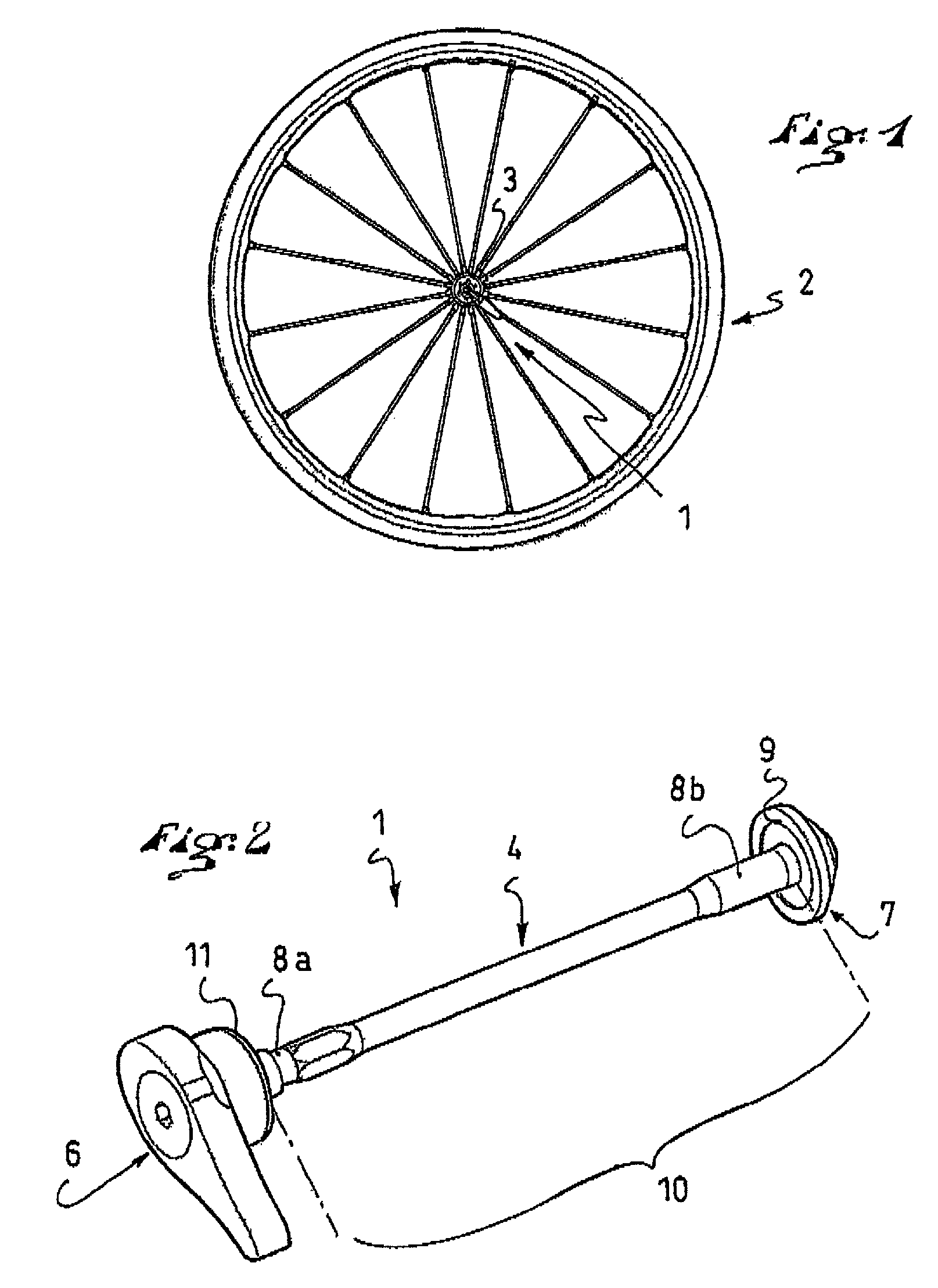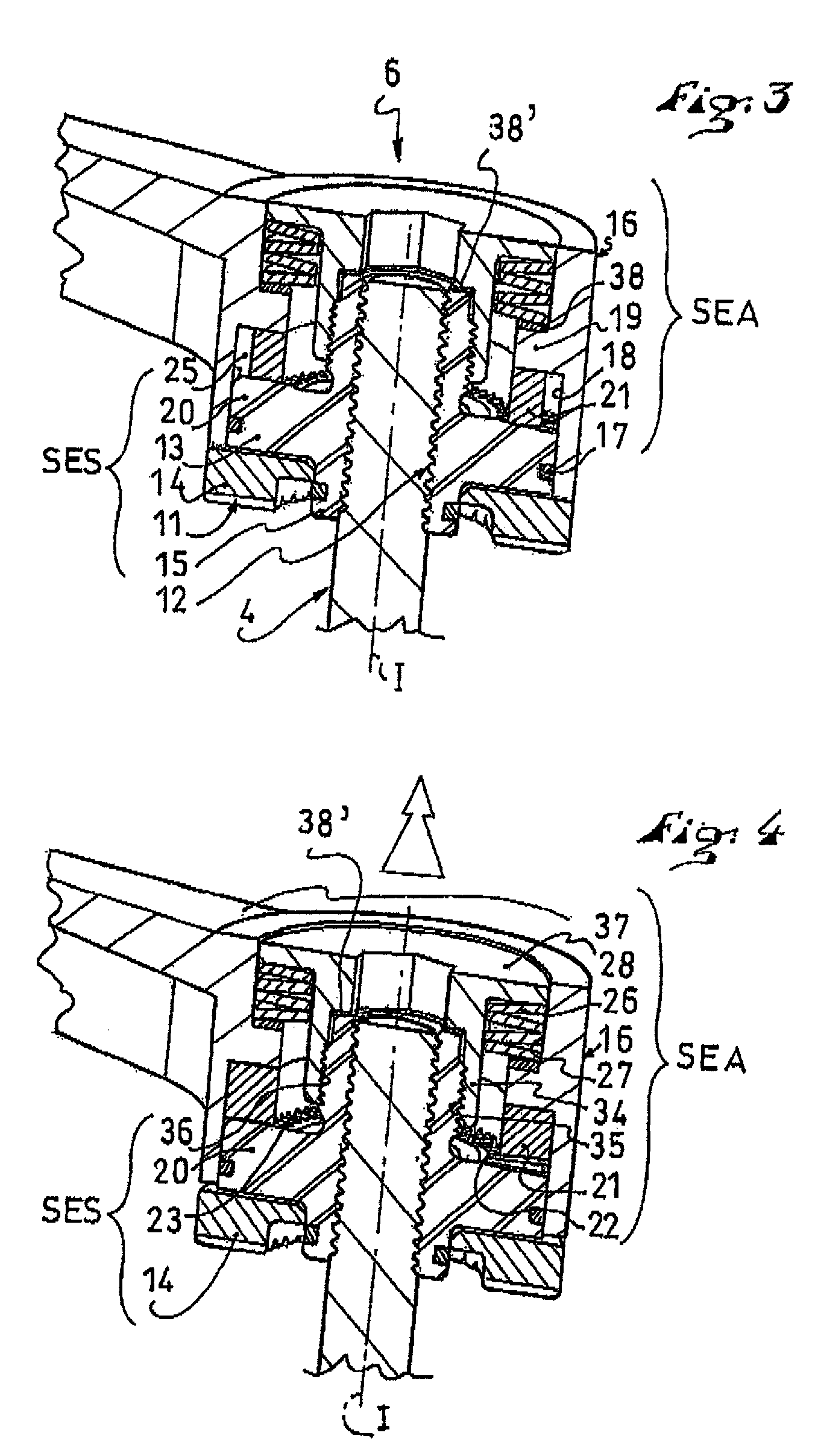Quick-tightening system for cycle with tightening torque control
a technology of torque control and tightening system, which is applied in the direction of screws, nuts, bolts, etc., can solve the problems of not enabling a good control of the tightening force, possible safety problems, and the risk of skewer rupture or breakage of another element of the device, so as to achieve sufficient mechanical strength, reduce weight, and low density
- Summary
- Abstract
- Description
- Claims
- Application Information
AI Technical Summary
Benefits of technology
Problems solved by technology
Method used
Image
Examples
example
[0168]The following table shows a comparison of the characteristics of various types of possible skewers for the device of the invention, which are manufactured using various materials: high strength steel (HR), standard steel, TA6V titanium alloy, 7349 aluminum alloy 7349, 7349 aluminum alloy with higher strength and magnesium alloy.
[0169]The values are given for a skewer that can resist a maximal traction force F of 10000 Newtons.
[0170]
Max. F 10000HS SteelSteelTA-6V70757349MgAl8ZnRm1400900980500700340Density7.87.84.552.82.81.8Rm / d179.49115.38215.38178.57250188.89Cross7.1411.1110.202014.2929.41section(mm2)Diameter3.023.763.605.054.266.12(mm)Mass / m55.7186.6746.43564052.94Mass / 7349139%217%116%140%100%132%Cost / kg11406815Machin-00−−+++ability
[0171]The table shows that aluminum alloys represent an advantageous compromise in terms of low weight, low cost, and good machinability. Other types of skewers can be used in the invention, with certain disadvantages however associated with weight...
PUM
 Login to View More
Login to View More Abstract
Description
Claims
Application Information
 Login to View More
Login to View More - R&D
- Intellectual Property
- Life Sciences
- Materials
- Tech Scout
- Unparalleled Data Quality
- Higher Quality Content
- 60% Fewer Hallucinations
Browse by: Latest US Patents, China's latest patents, Technical Efficacy Thesaurus, Application Domain, Technology Topic, Popular Technical Reports.
© 2025 PatSnap. All rights reserved.Legal|Privacy policy|Modern Slavery Act Transparency Statement|Sitemap|About US| Contact US: help@patsnap.com



